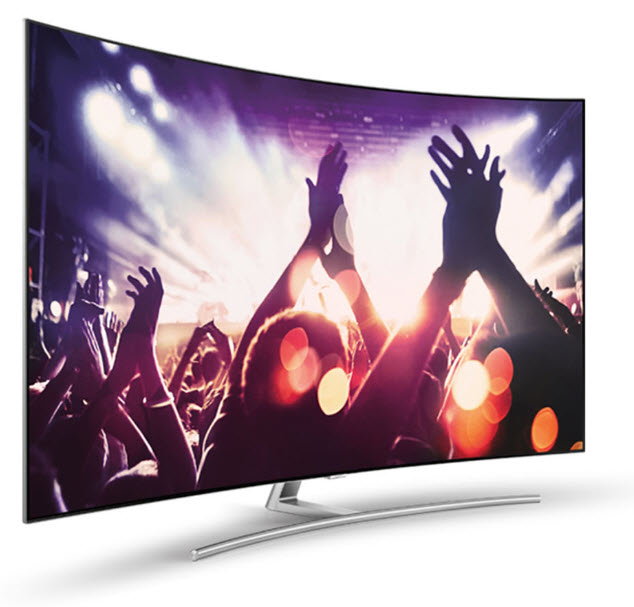Samsung and LG battled for next gen TV display technology dominance at CES 2017. Top consumer brands generally showcase their latest and greatest TV products at the event to establish technology supremacy and set the stage for the coming year.

This year, LG showcased OLED (Organic Light Emitting Diode) display technology’s supremacy through super thin wall TV, while Samsung unveiled its newly named QLED (Quantum Dot Light Emitting Diode) TV with high display performance (see Samsung Gives a Good TV a Bad Name — Again – Man. Ed.). The battle between OLED and QLED will intensify this year.
LG Received High Marks Showcasing W7 Super Thin Wall OLED TV
LG introduced the W7 4K UHD OLED TV in a 65″ size with a panel thickness of only 2.57 mm that can be flush-mounted on a wall with magnets. It will also be available in 77″. LG’s new “Picture on wall design’ and super thin OLED display panel have given the new TV its incredible thinness. This TV also supports four different variations of HDR (High Dynamic Range) including HDR 10, Dolby Vision, HLG (Hybrid Log Gamma) and advance HDR by Technicolor. LG reported improved brightness, color accuracy and color consistency even viewed with a wide 60-degree angle in this new model. Being a self-emissive display without a backlight, OLED has been leading TV display performance (deeper black level, higher contrast, wide color gamut and fast response time).

The 65-inch size is expected to be available in the market by Q1 2017 with an estimated price of $8K. There was no price available for the 77-inch at this time. However, the previous 77-inch 4K OLED HDR TV model is available for $20K in the U.S. in early January 2017. LG Electronics earned “Best of CES 2017” honors for the W7 77-inch OLED TV.
Samsung Focused On Establishing QLED As The Next Generation TV Technology
Samsung took quantum dot technology to the next level with major enhancements to picture quality, color performance and a new consumer-centric name (QLED). It will come in 55-inch, 65-inch, 75-inch and 88-inch sizes with expected shipping in Q1 2017. Prices are not available yet. According to Samsung, these new TV sets offer dramatically improved color performance displaying the DCI-P3 color space accurately. They are capable of producing 100% color volume, a first for the TV market. This means that they can express all colors at any level of brightness with even the subtlest difference visible at QLED peak luminance of between 1500 to 2000 cd/m².
Samsung reported that it achieved the improvement in performance by using a new metal alloy quantum dot material and new structure for the display panel. But this is still a traditional “photo enhanced display”, not an emissive display.

Quantum dot based “emissive” display is expected to come in future years, and has commonly been known as QLED in the display community. But just like its previous marketing message for the successful “LED TV” (for LED backlight based LCD TV) Samsung selected “QLED” name for its “Quantum dot LED TV” in 2017 for future success. It is still an LCD TV based on Quantum dot technology.
So Which Technology Is Winning?
OLED TV has been the leading display industry in terms of picture quality with its deep black, great contrasts and wider viewing angles. LCD TV-based on quantum dot has been able to deliver higher peak brightness with better color and reducing the performance gap with OLED.
OLED TV will serve only the niche premium market. Why? Manufacturing challenges and yield issues will keep OLED TV panel supply low and cost high for next few years (see DSCC Releases Quarterly OLED Supply/Demand Report and Model – Massive Growth Predicted – subscription required). On the other hand, quantum dot-based LCD TVs are poised to gain significant market shares in the next few years due to higher supply and lower cost. They are available in multiple sizes and price ranges, serving different segments of the market. The new consumer centric QLED name may do the trick to gain consumer attention and meet the replacement demand.
Sweta Dash is the founding president of Dash-Insights, a market research and consulting company specializing in the display industry. For more information, contact [email protected] or visit www.dash-insight.com

